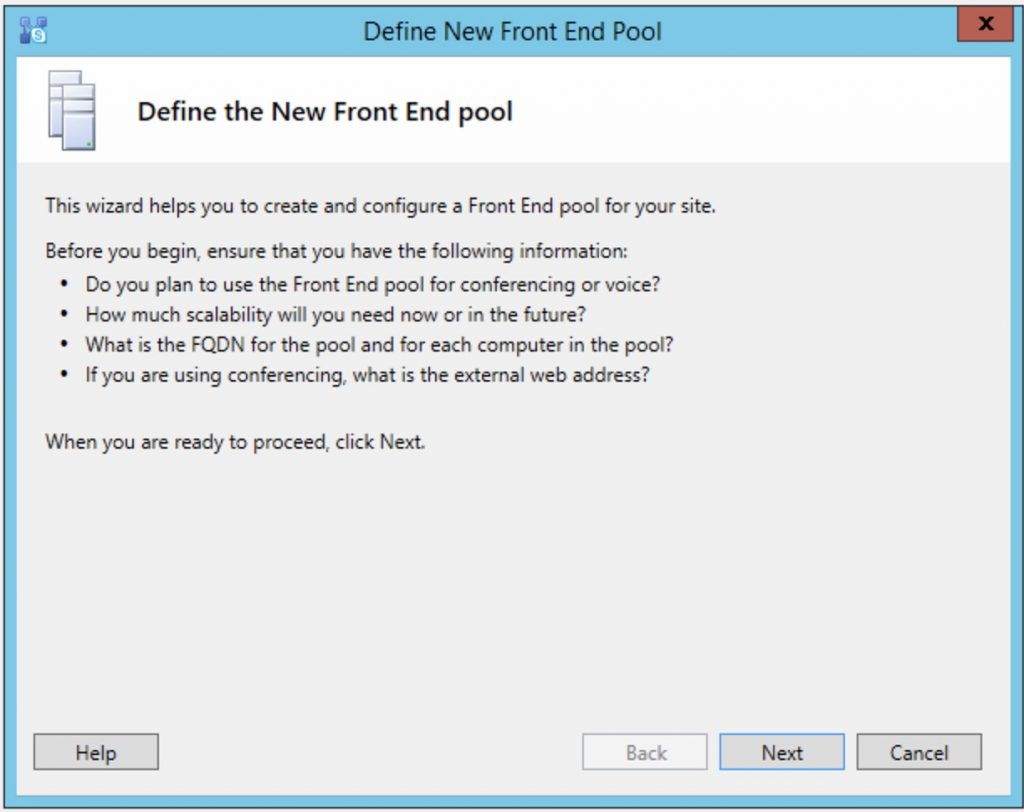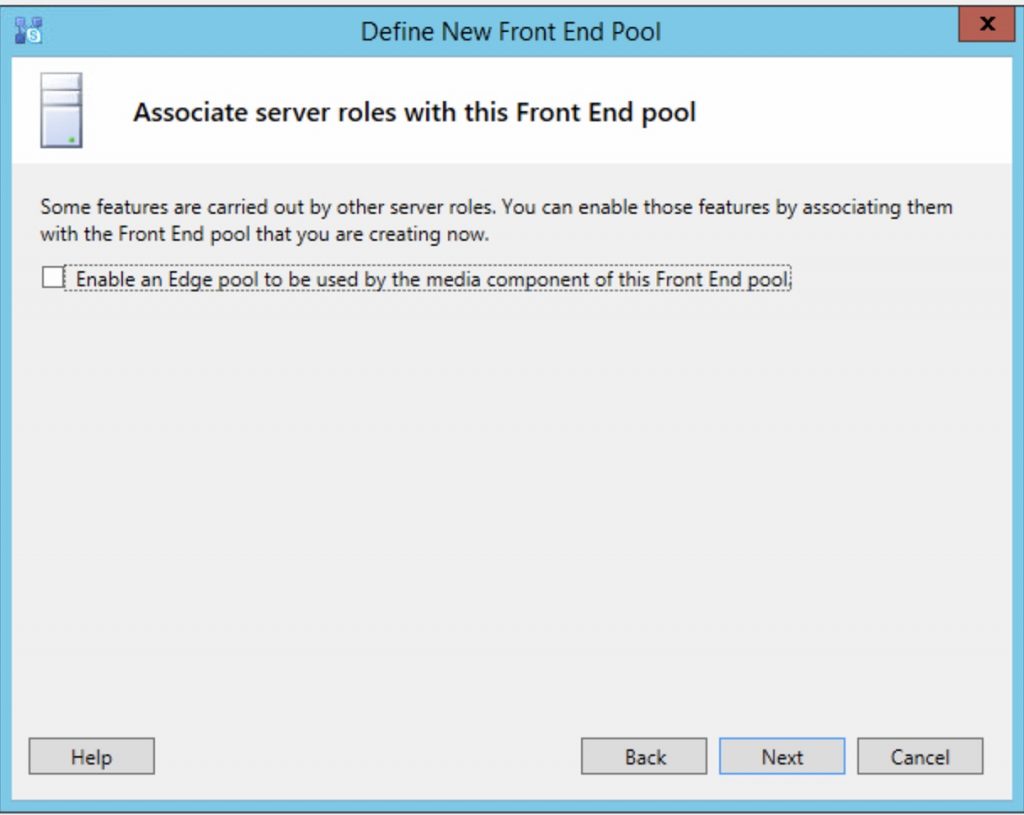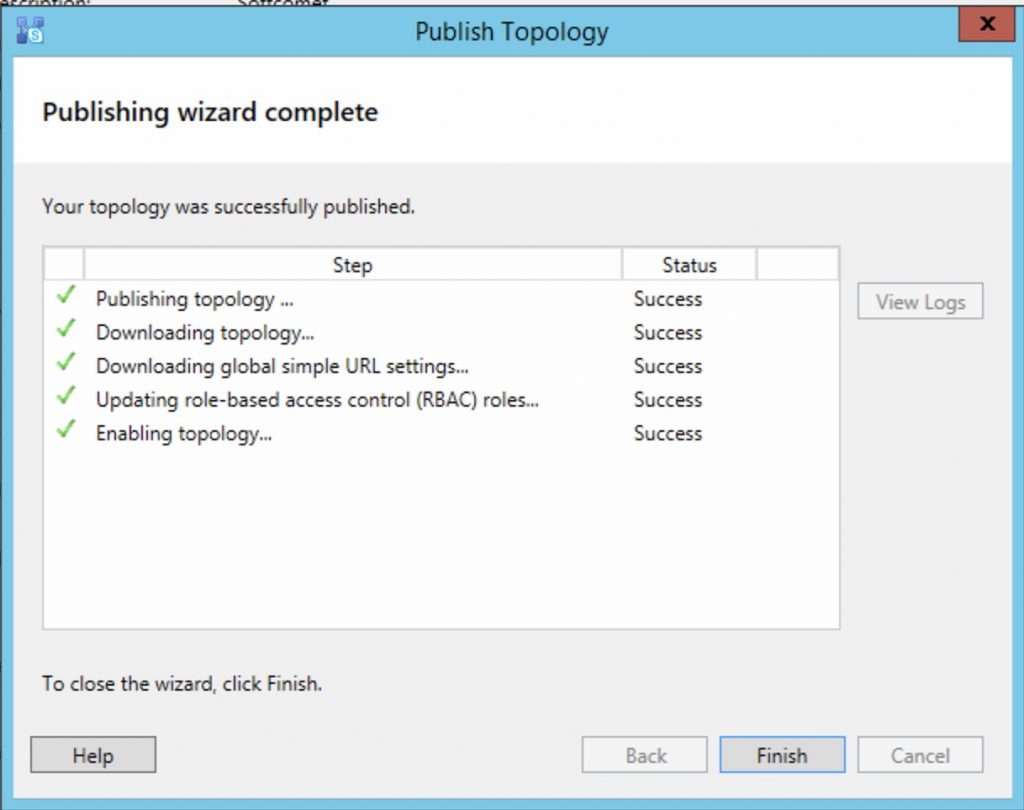- Skype For Business Server (PART ONE)
- Skype For Business Server (PART TWO)
- Skype For Business Server (PART THREE)
- Skype For Business Server (PART FOUR)
At this point we need to setup the Skye For Business and so , we need to do that:
- setup DNS records
- setup the SKYPE Topology
- setup the SKYPE
- Setup DNS records:
The minimal record are:
record TYPE = A
- sip.softcomet.it
- webconf.sofcomet.it
- av.softcomet.it
- lyncdiscover.softcomet.it
- meet.softcomet.it
- dialin.softcomet.it

Record TYPE = SRV
- _sipinternaltls.tcp_(sip-domain) using TLS
- _sipinternal.tcp.(sip-domain) using TCP
- _sip._tls.(sip-domain) using TLS (Externally only)

2) setup the SKYPE Topology
Now go back to SFB server and open the “topology builder”


Select “New Topology”


Assign a SIP domain name (your public domain )






At this point finish the setup lancing the Front-End Wizard


The option above are from “Microsoft site” URLhttps://docs.microsoft.com/en-us/lyncserver/lync-server-2013-define-and-configure-a-front-end-pool-or-standard-edition-server?redirectedfrom=MSDN :
Conferencing This selection enables a rich set of features including:
IM with more than two parties in an IM session.
Conferencing, which includes document collaboration, application sharing, and desktop sharing.
A/V conferencing, which enables users to have real-time audio/video (A/V) conferences without the need for external services such as the Live Meeting service or a third-party audio bridge.
Dial-in (PSTN) conferencing Allows users to join the audio portion of a Lync Server 2013 conference by using a public switched telephone network (PSTN) phone without requiring an audio conferencing provider.
Enterprise Voice Enterprise Voice is the Voice over IP (VoIP) solution in Lync Server 2013 that allows users to make and receive phone calls. You would deploy this feature if you plan to use Lync Server 2013 for voice calls, voice mail, and other functions that use a hardware device or a software client.
Call admission control (CAC) CAC determines, based on available network bandwidth, whether to allow real-time communications sessions such as voice or video calls to be established. If you have deployed only IM and presence, CAC is not needed because neither of these two features uses CAC.
Archiving Archiving provides a way for you to archive IM content, conferencing (meeting) content, or both that is sent through Lync Server 2013.
Monitoring Monitoring Server enables you to collect numerical data that describes the media quality on your network and endpoints, usage information related to VoIP calls, IM messages, A/V conversations, meetings, application sharing, and file transfers, and call error and troubleshooting information for failed calls.




At this point we have to “publish this topology”.






3) setup the SKYPE
Open the “deploimnet wizard”

Select “Install or Update Skype for Business Server System”







